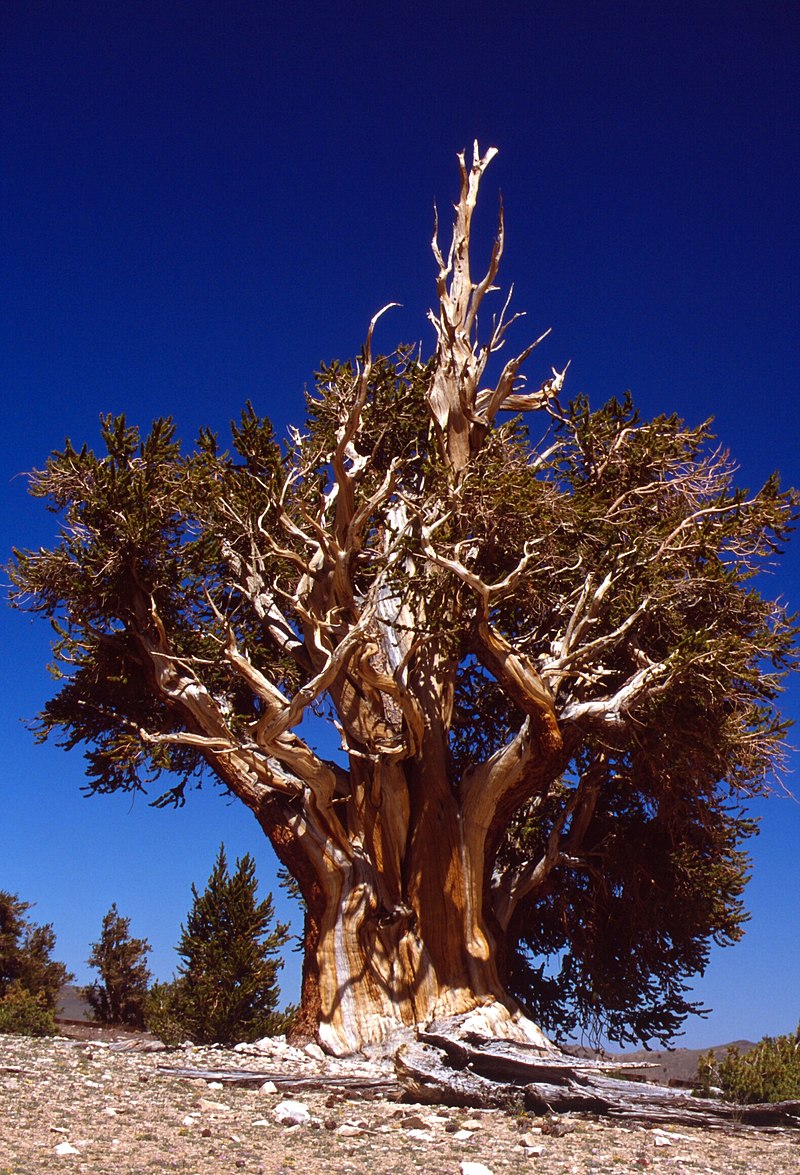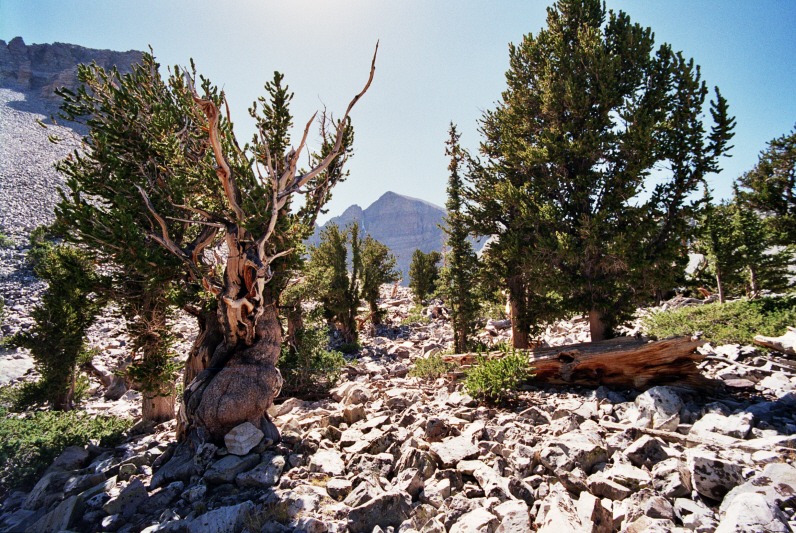Trees are fundamental to our planet’s ecosystem, offering not just the oxygen we breathe and the fruits we eat but also serving as the backbone for countless habitats across the globe. They are natural historians, their rings a record of the past, telling tales of climatic shifts, environmental changes, and the passage of time. Beyond their ecological roles, trees hold profound cultural and spiritual significance for many communities, symbolizing life, growth, and renewal.
Among these leafy giants, the world’s oldest trees stand as majestic remnants of the ancient world, having witnessed millennia pass by from the rise and fall of civilizations to the onset of rapid technological advancements in the human era. These ancient sentinels have sparked a global fascination due to their incredible longevity and resilience, making them subjects of scientific study and conservation efforts. They are not merely plants but symbols of endurance, offering insights into past climates and environments, and reminding us of the interconnectedness of life on Earth.
As we delve into the realms where the world’s oldest trees stand, we not only pay homage to their timeless presence but also underscore the urgent need to preserve these natural wonders for future generations to marvel at and learn from.
Great Basin Bristlecone Pine (California, Nevada)
The Great Basin Bristlecone Pine is a remarkable species known for its incredible longevity and resilience, making it one of the oldest living organisms on Earth. Found in the high mountains of the Great Basin region in the United States, these trees can live for thousands of years, with some individuals dating back over 4,800 years. Their twisted and gnarled forms tell a story of survival in harsh conditions, enduring through extreme temperatures, high winds, and poor soil.
What makes the Great Basin Bristlecone Pine truly extraordinary is its ability to thrive where few other plants can. The secret to its longevity lies in its slow growth and dense, resinous wood, which is resistant to insects, fungi, and rot. This species not only contributes to our understanding of climate history through dendrochronology (the study of tree rings) but also symbolizes the incredible adaptability and persistence of nature.
Methuselah (White Mountains, California, USA)
Methuselah, nestled within the rugged expanse of the White Mountains in California, USA, is a testament to the enduring strength and resilience of nature. This Great Basin bristlecone pine (Pinus longaeva) is renowned for being one of the oldest non-clonal living trees on Earth, with scientists estimating its age to be over 4,800 years. Despite its ancient age, the exact location of Methuselah is kept a closely guarded secret to protect it from potential harm, allowing it to continue its silent vigil over the millennia in relative solitude.
The tree’s survival through countless centuries is a marvel, especially considering the harsh conditions it endures. The high elevation, arid climate, and poor soil of its mountainous habitat would be inhospitable to most life forms, yet Methuselah and its kin thrive, showcasing a stunning example of biological endurance. Methuselah’s significance extends beyond its age; it provides invaluable insights into the past climate of our planet, with its rings serving as a detailed record of ecological shifts and patterns over thousands of years.
Prometheus (Wheeler Peak, Nevada, USA)
Prometheus was another awe-inspiring Great Basin bristlecone pine, once standing tall on Wheeler Peak in Nevada, USA. Its story is a blend of grandeur and tragedy, marking a pivotal moment in the history of environmental conservation. Unlike Methuselah, Prometheus met its end in 1964 when it was cut down for research purposes, sparking widespread controversy and regret. At the time of its felling, Prometheus was estimated to be around 4,900 years old, making it one of the oldest known non-clonal living organisms.
The cutting of Prometheus highlighted the delicate balance between scientific inquiry and the preservation of natural wonders. The tree’s death led to an increased awareness and appreciation for the longevity and significance of bristlecone pines and other ancient trees. It also prompted changes in policies regarding the protection of such irreplaceable natural resources.
Old Tjikko (Fulufjället Mountain, Sweden)
Old Tjikko, perched on the stark landscape of Fulufjället Mountain in Sweden, is a remarkable testament to the resilience of nature against the backdrop of time. This ancient Norway Spruce (Picea abies) has been dated to be around 9,558 years old, making it the world’s oldest known clonal tree. Unlike traditional trees that grow from a single seed, Old Tjikko has regenerated new trunks, branches, and roots in the same location for millennia, a process that has allowed it to survive through drastic climatic shifts and changes in its environment.
The discovery of Old Tjikko has fascinated scientists and nature lovers alike, providing a rare glimpse into the post-glacial world and the incredible adaptability of life. The tree’s survival strategy, involving clonal regeneration, showcases a fascinating aspect of plant biology where the root system remains alive while trunks come and go. Situated in a remote part of the Swedish mountains, Old Tjikko stands as a silent witness to the passing eons, embodying the enduring strength of the natural world.
Alerce (Andes Mountains, Chile)
The Alerce, native to the rainforests of the Andes Mountains in Chile, is a majestic species that rivals the grandeur of California’s giant sequoias. Known scientifically as Fitzroya cupressoides, this towering tree is one of South America’s oldest and tallest species, with some individuals believed to be over 3,600 years old. The Alerce’s remarkable longevity and impressive stature have made it a subject of admiration and scientific interest, highlighting the rich biodiversity of Chile’s temperate rainforests.
Conservation efforts have become crucial for the Alerce, as it faces threats from logging and habitat loss. Recognized for its durable and highly valued wood, the Alerce was heavily exploited in the past, leading to a significant decline in its population. Today, it is a protected species, and its preservation is vital not only for maintaining biodiversity but also for understanding the ecological history of the Andes region.
Jomon Sugi (Yakushima Island, Japan)
Jomon Sugi, located on the mystical Yakushima Island in Japan, is an ancient cedar tree that embodies the rich natural and cultural heritage of the region. Estimated to be between 2,000 to 7,200 years old, Jomon Sugi is revered not only for its age but also for its majestic presence within the island’s lush, primeval forests. Yakushima Island, a UNESCO World Heritage site, is known for its diverse ecosystems and the remarkable endurance of its trees, with Jomon Sugi standing as a symbol of nature’s resilience and beauty.
The tree’s name, Jomon Sugi, is inspired by the Jomon period of Japanese prehistory, reflecting the deep historical significance and timelessness of this natural monument. It attracts thousands of visitors each year, drawn by the desire to connect with nature and witness the grandeur of one of the world’s oldest living trees. Jomon Sugi’s survival through millennia, facing natural challenges and human activity, highlights the importance of conservation efforts to protect such irreplaceable treasures
The Senator (Longwood, Florida, USA)
The Senator was an iconic and majestic bald cypress tree located in Longwood, Florida, USA, revered not only for its immense size but also for its extraordinary age. Before it’s unfortunate demise in 2012, The Senator stood as one of the oldest and tallest trees in the world, with an estimated age of about 3,500 years. This remarkable tree reached a towering height of 125 feet (38 meters) and had a trunk diameter of 17.5 feet (5.3 meters), making it a natural monument and a significant landmark in the Big Tree Park of Seminole County.
The Senator’s longevity allowed it to be a silent observer to centuries of history, from the early Native American settlers in the region to the arrival of European explorers and beyond. It was named after M.O. Overstreet, a senator who donated the land where the tree stood to Seminole County for a public park in the 1920s. The tree was a popular attraction, drawing visitors from around the globe who marveled at its size and age. However, The Senator’s life came to an abrupt end due to a fire caused by human activities. Its loss was deeply felt, serving as a somber reminder of the fragility of natural wonders, despite their apparent strength and endurance.
Conclusion
These oldest trees stand as living monuments to the Earth’s ancient past, providing scientists with invaluable data on climate change, ecology, and the evolution of species. Their existence challenges us to reflect on our own impact on the planet and the legacy we leave for future generations. As symbols of endurance, history, and natural beauty, they underscore the importance of conservation efforts to protect these and other natural wonders. Let us take inspiration from these ancient sentinels to foster a deeper respect for nature and commit to preserving the delicate balance of our planet’s ecosystems. Their enduring presence is a call to action, a reminder of the critical role we play in safeguarding the Earth’s biodiversity for the awe and wonder of generations to come.



